.
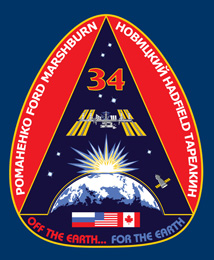
The Expedition 34 crew living and working aboard the International Space Station Tuesday continued departure preparations for three of its crew members and performed a variety of science experiments from around the world.
Commander Kevin Ford and Flight Engineers Evgeny Tarelkin and Oleg Novitskiy gathered and packed items to prepare for their upcoming return to Earth. The trio is set to journey back to Earth aboard their Soyuz TMA-06M spacecraft on Thursday night after spending 143 days in space.
They are scheduled to undock from the station’s Poisk Mini-Research Module 2 at about 8:30 p.m. EDT, landing in the steppe of Kazakhstan northeast of the remote town of Arkalyk about 3 ½ hours later.
.
NASA Television will provide live coverage March 13-15 as three crew members aboard the International Space Station end almost five months at the orbiting laboratory.
Expedition 34 Commander Kevin Ford of NASA, Russian Soyuz Commander Oleg Novitskiy and Russian Flight Engineer Evgeny Tarelkin will undock their Soyuz spacecraft from the station at 8:30 p.m. EDT, March 14, heading for a landing in Kazakhstan northeast of the remote town of Arkalyk at 11:57 p.m. (10:57 a.m. Kazakh time March 15). They will have spent 143 days in space since launching from Kazakhstan Oct. 23.
When the Soyuz undocks, Expedition 35 will begin aboard the station under the command of Chris Hadfield of the Canadian Space Agency. Hadfield will be the first Canadian commander. He and his crewmates, NASA astronaut Tom Marshburn and Russian cosmonaut Roman Romanenko, will tend to the station for two weeks until the arrival of three new crew members: NASA astronaut Chris Cassidy and Russian cosmonauts Pavel Vinogradov and Alexander Misurkin.
NASA TV coverage will begin Wednesday, March 13, with a change of command ceremony in which Ford will hand station command to Hadfield. Coverage will continue March 14 and 15 with Expedition 34 landing and post-landing activities. The coverage includes:
Wednesday, March 13:
5:10 p.m. -- Expedition 34/35 change of command ceremony
Thursday, March 14:
4:45 p.m. -- Farewells and hatch closure (hatch closure scheduled at 5:15 p.m.)
8:15 p.m. -- Undocking (undocking scheduled at 8:30 p.m.)
10:45 p.m. -- Deorbit burn and landing (deorbit burn scheduled at 11:04 p.m.; landing scheduled at 11:57 p.m.)
Friday, March 15:
2 a.m. -- Video File of hatch closure, undocking and landing activities
2 p.m. -- Video File of post-landing activities and interviews
.
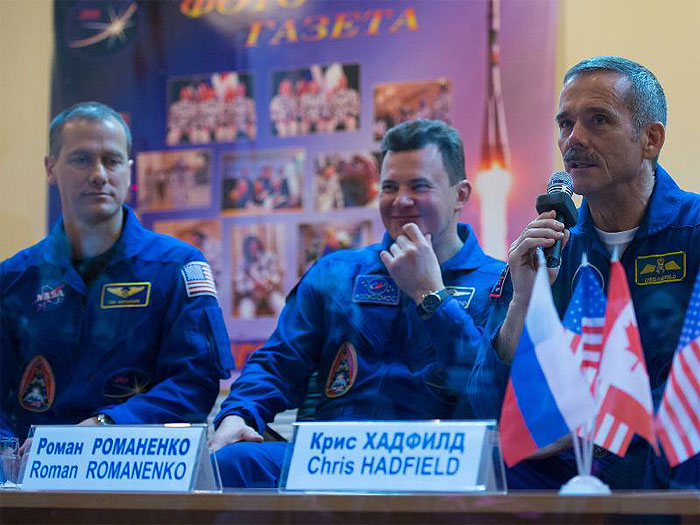
.
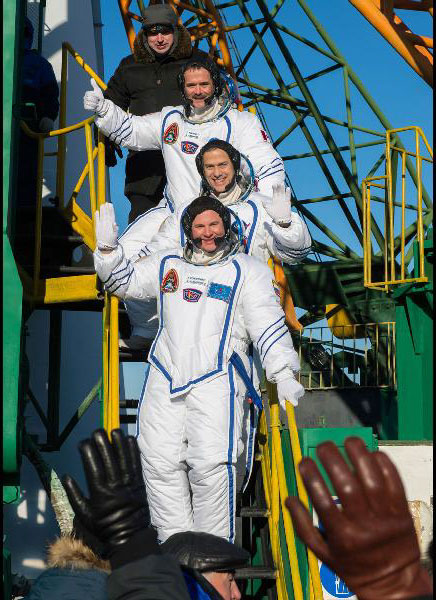
Quelle: NASA
.
Update: 14.03.2013
.
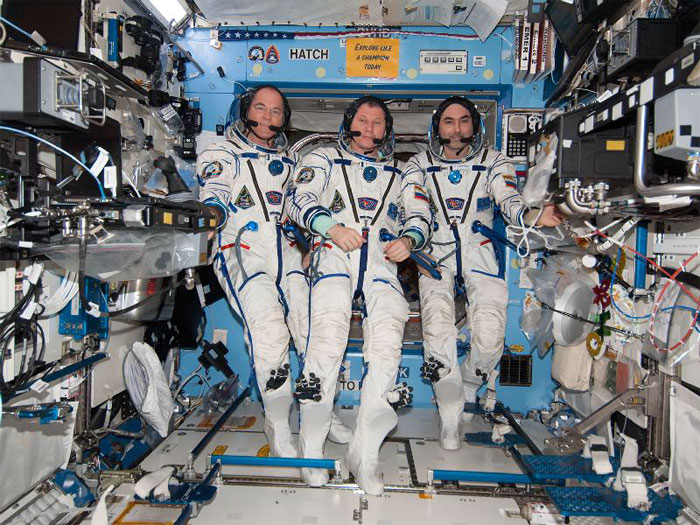
Expedition 34 Crew Members
With their scheduled stay onboard the International Space Station headed toward its final days, three members of the Expedition 34 crew pose for some photographs in their Sokol suits in the U.S. Laboratory or Destiny. From left are NASA astronaut Kevin Ford, commander, with Roscosmos Flight Engineers Oleg Novitskiy and Evgeny Tarelkin.
The three crew members will undock their Soyuz spacecraft from the station at 8:30 p.m. EDT, March 14, heading for a landing in Kazakhstan northeast of the remote town of Arkalyk at 11:57 p.m. EDT. They will have spent 143 days in space since launching from Kazakhstan Oct. 23.
When the Soyuz undocks, Expedition 35 will begin aboard the station under the command of Chris Hadfield of the Canadian Space Agency. Hadfield will be the first Canadian commander. He and his crewmates, NASA astronaut Tom Marshburn and Russian cosmonaut Roman Romanenko, will tend to the station for two weeks until the arrival of three new crew members: NASA astronaut Chris Cassidy and Russian cosmonauts Pavel Vinogradov and Alexander Misurkin.
.
Update: 14.03.2013
LIVE-Frams von Abdockmanöver: NASA-TV
.
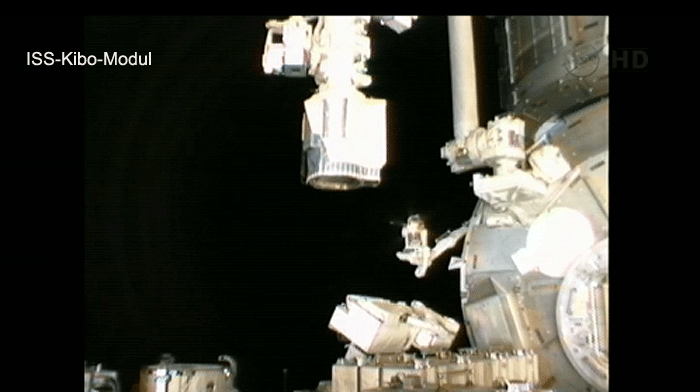
.

.
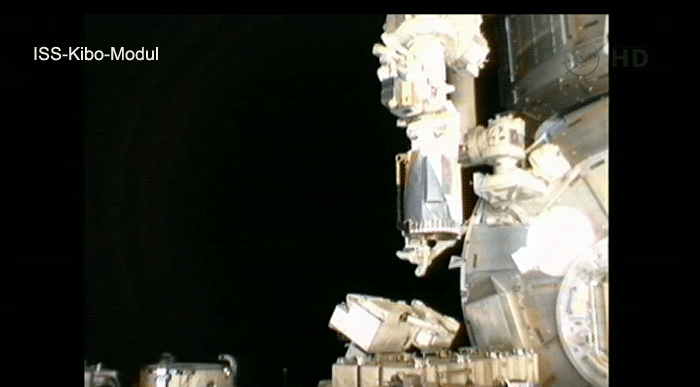
.
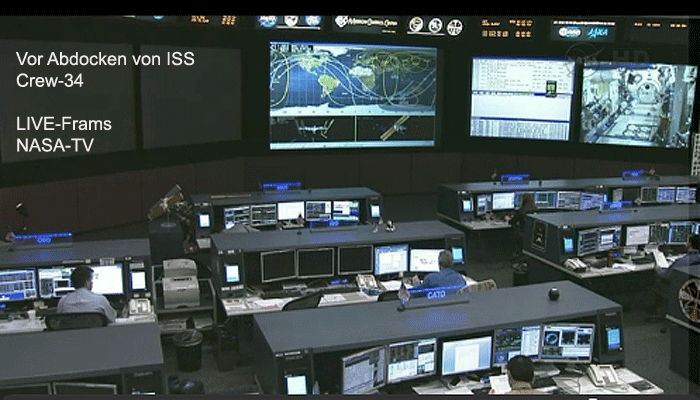
.
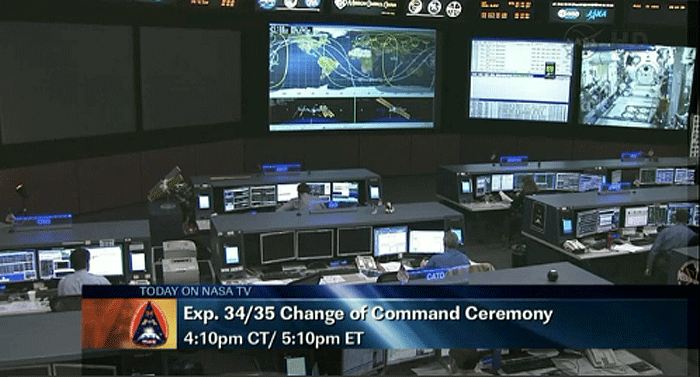
.

.

.
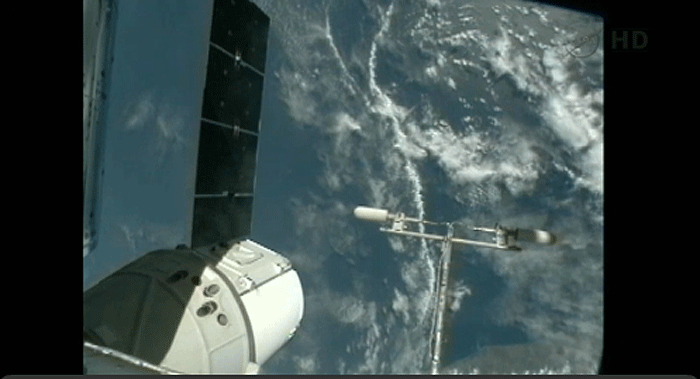
.
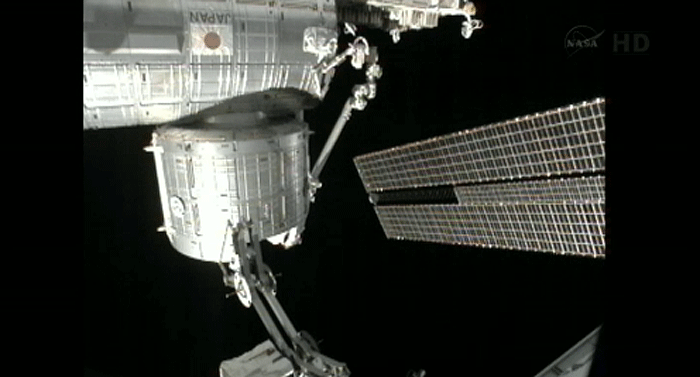
.

.
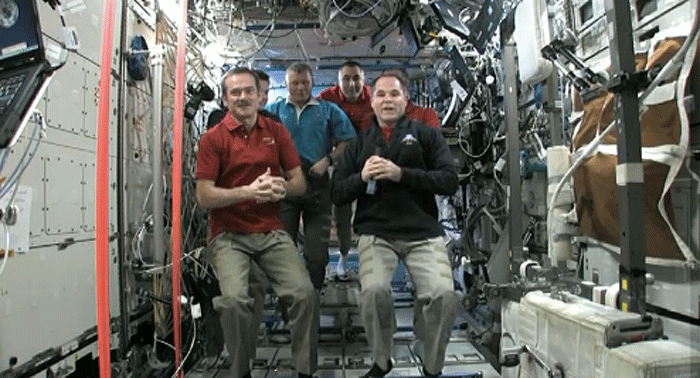
.
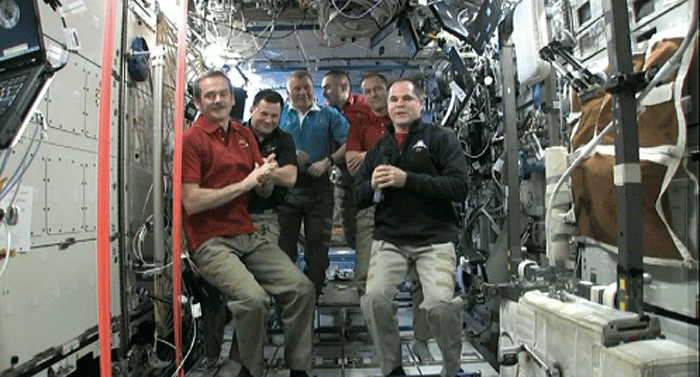
.
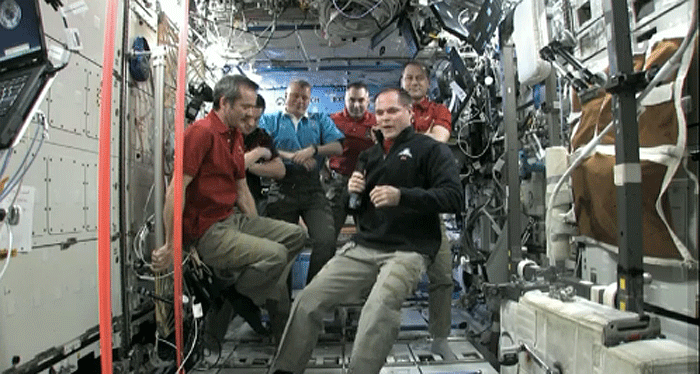
Kevin Ford übergibt die Verantwortung über ISS Chris Hadfield
.
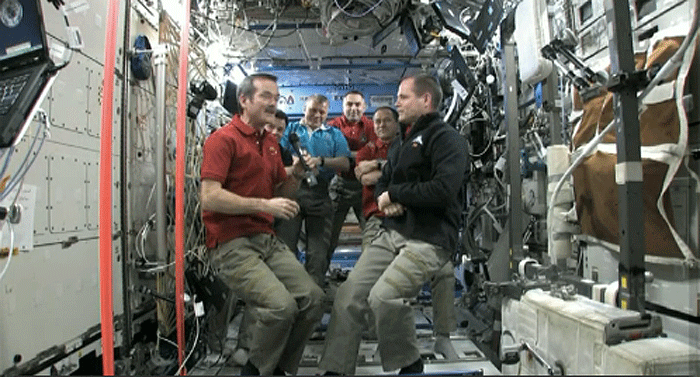
.
Abdocken von Sojus TMA-06M
.
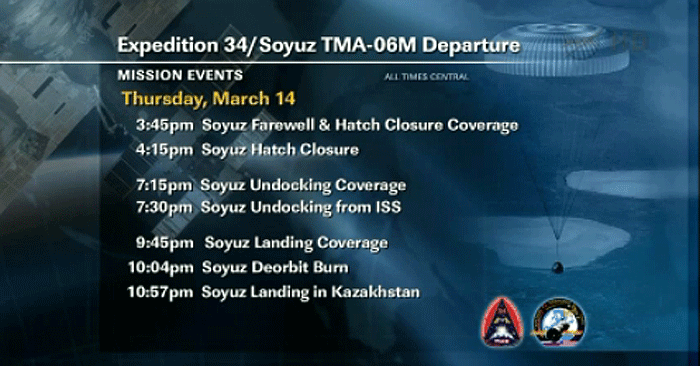
.
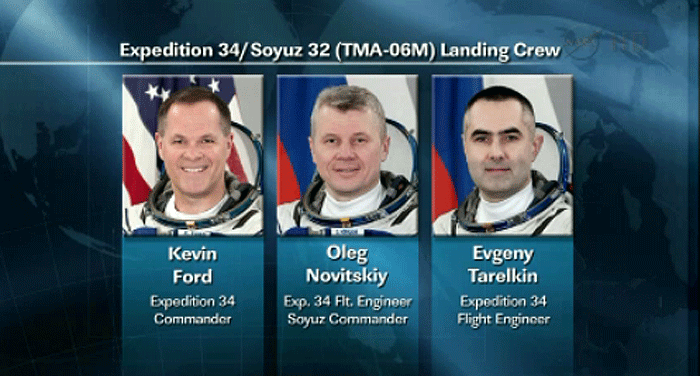
.
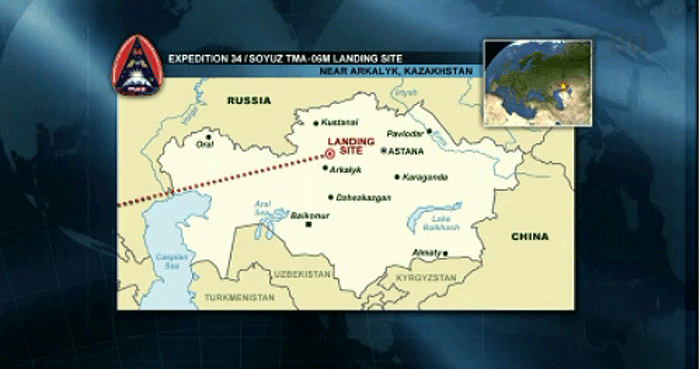
.
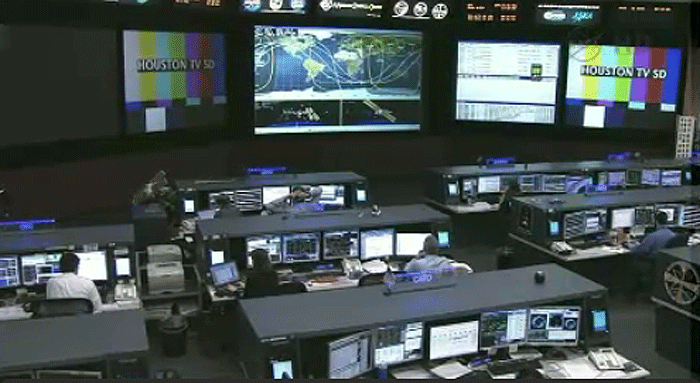
.
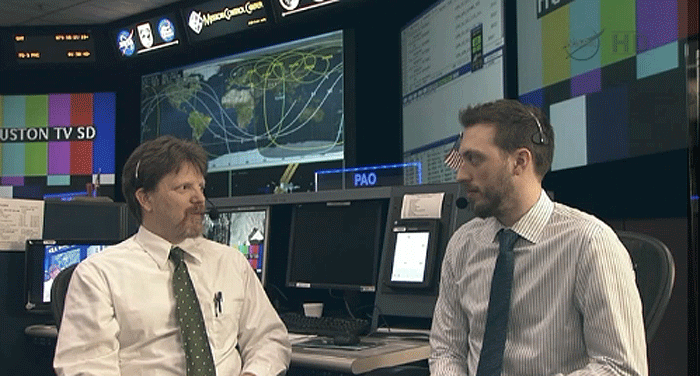
.
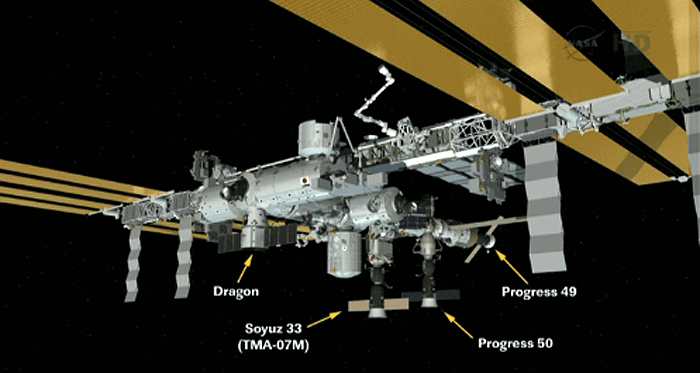
.
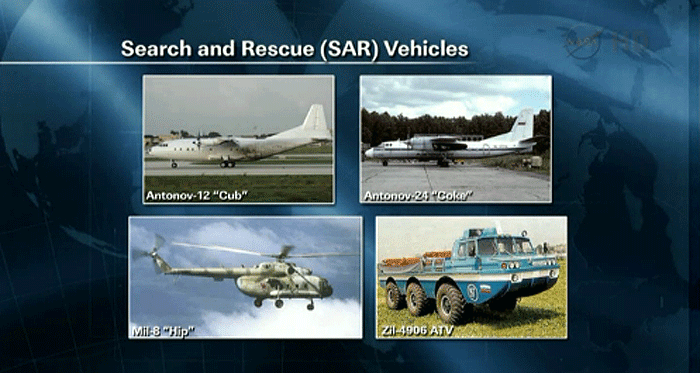
.
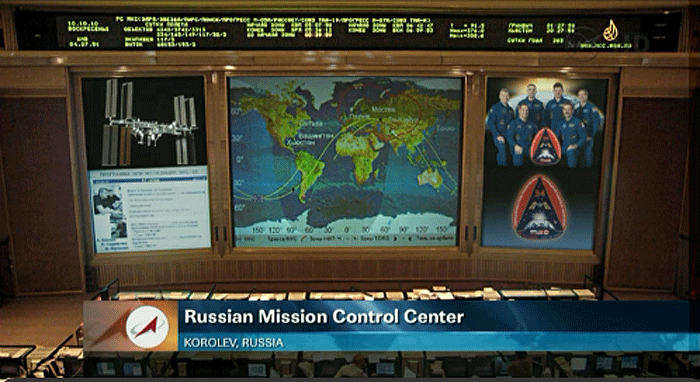
.

.
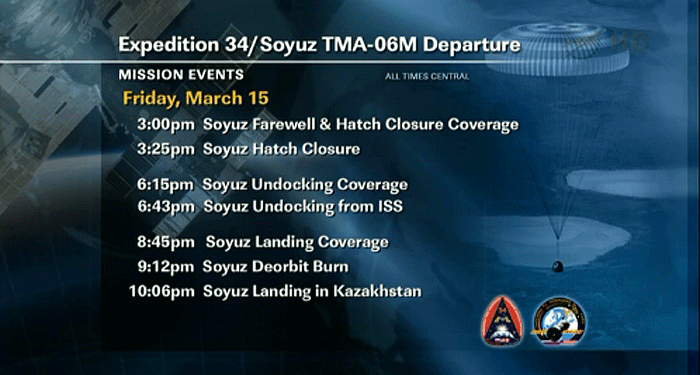
.
Update: 15.03.2013
.
An American astronaut and two Russian cosmonauts are stuck in space for one more day after freezing rain and fog on Earth prevented them from landing in Central Asia on Thursday (March 14), NASA officials say.
The foul weather, which one Russian space agency official described simply as "horrible," means NASA astronaut Kevin Ford and cosmonauts Oleg Novitskiy and Evgeny Tarelkin had to delay their return from the International Space Station for at least 24 hours. The three men have been living in space for 141 days and were preparing to enter their Soyuz spacecraft for a landing on the frigid steppes of Kazakhstan tonight.
"We are waving off landing," NASA spokesperson Rob Navias said during live mission commentary. "No Soyuz landing tonight."
.
Update:16.03.2013
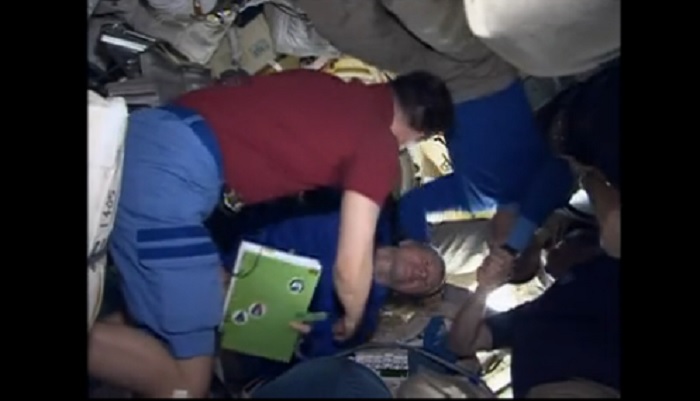
Three Expedition 34 crew members said goodbye to three of their International Space Station crewmates Friday afternoon March 15, 2013. Commander Kevin Ford and Flight Engineers Oleg Novitskiy and Evgeny Tarelkin entered their Soyuz TMA-06M spacecraft and undocked at 7:43 p.m. EST after five months in space. Staying behind is new Expedition 35 Commander Chris Hadfield with Flight Engineers Tom Marshburn and Roman Romanenko. They await a new trio of station residents scheduled for lift off from ...
.
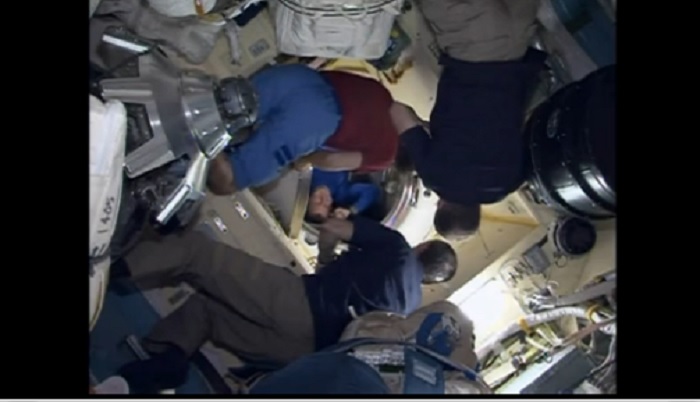
.
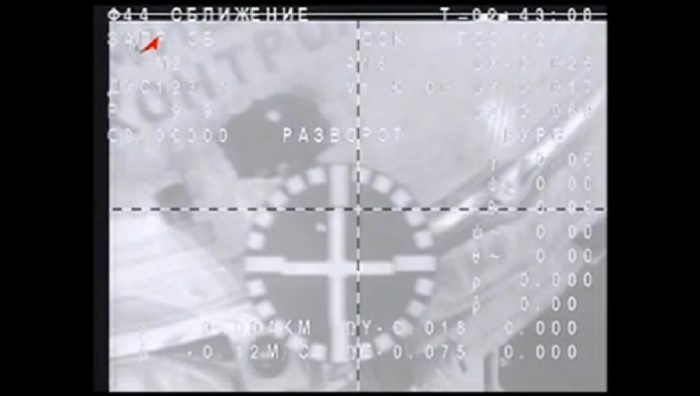
.
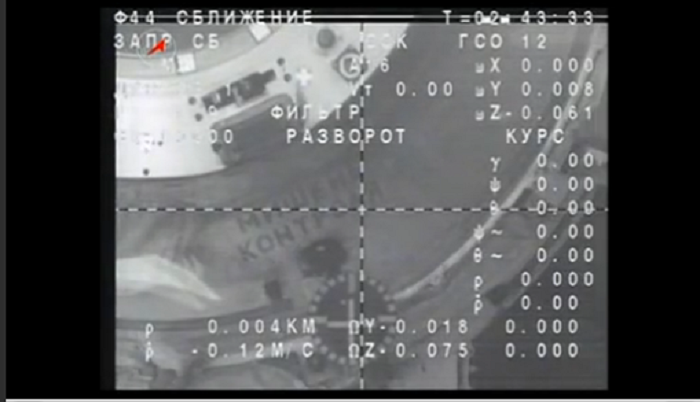
.
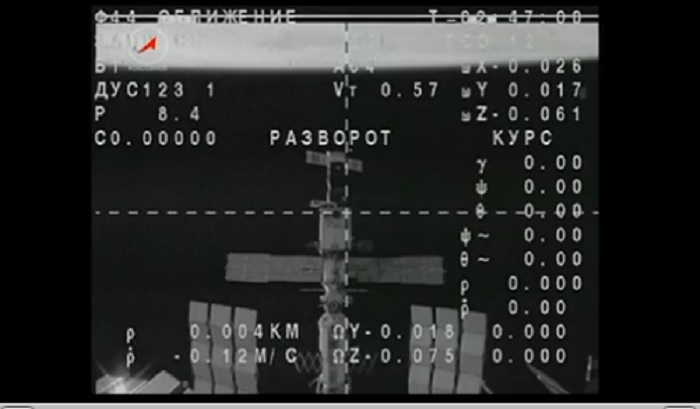
.

.
Expedition 34 Commander Kevin Ford and Flight Engineers Evgeny Tarelkin and Oleg Novitskiy landed their Soyuz TMA-06M spacecraft in the steppe of Kazakhstan, northeast of the remote town of Arkalyk Friday at an estimated time of 11:08 p.m. EST. Despite fog, low visibility and below freezing temperatures Russian recovery teams were on hand to help the crew exit the Soyuz vehicle and adjust to gravity after 144 days in space.
The trio launched aboard the Soyuz TMA-06M spacecraft from the Baikonur Cosmodrome in Kazakhstan in October and spent 142 days living and working aboard the International Space Station.
Novitskiy was at the controls of the spacecraft as it undocked at 7:43 p.m. from the Poisk Mini-Research Module 2.
The trio launched aboard the Soyuz TMA-06M spacecraft from the Baikonur Cosmodrome in Kazakhstan in October and spent 142 days living and working aboard the International Space Station.
Novitskiy was at the controls of the spacecraft as it undocked at 7:43 p.m. from the Poisk Mini-Research Module 2.
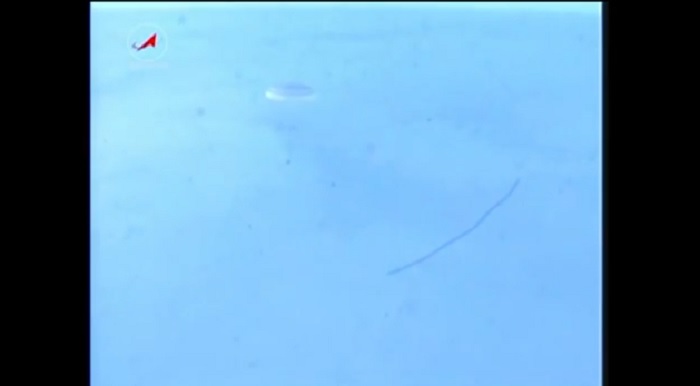
.
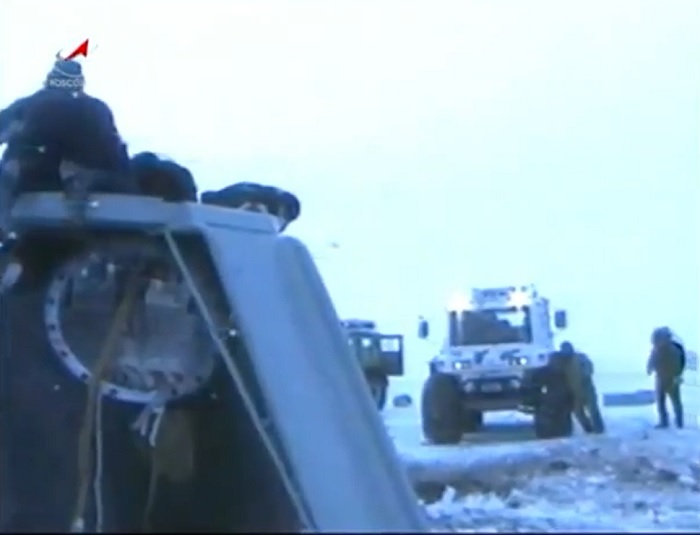
.
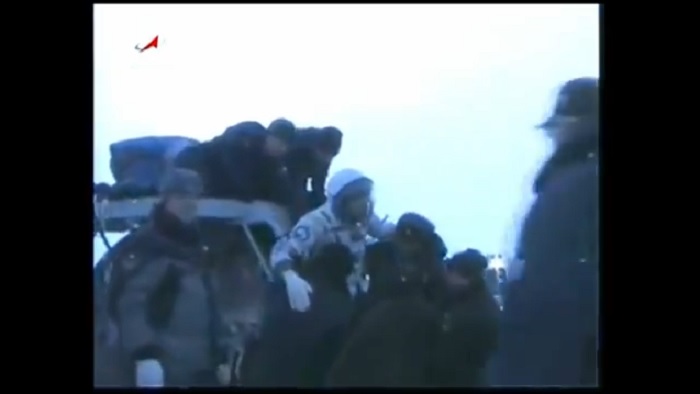
.
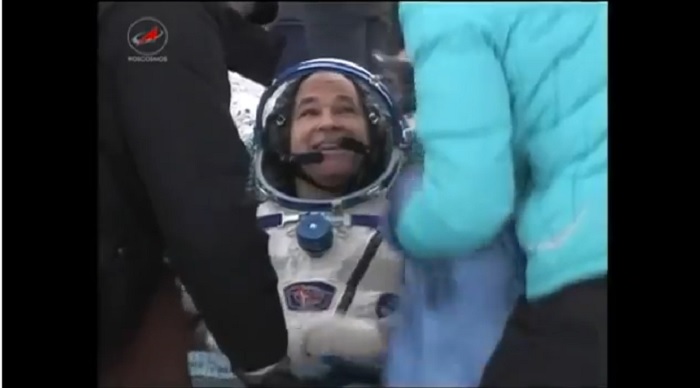
.
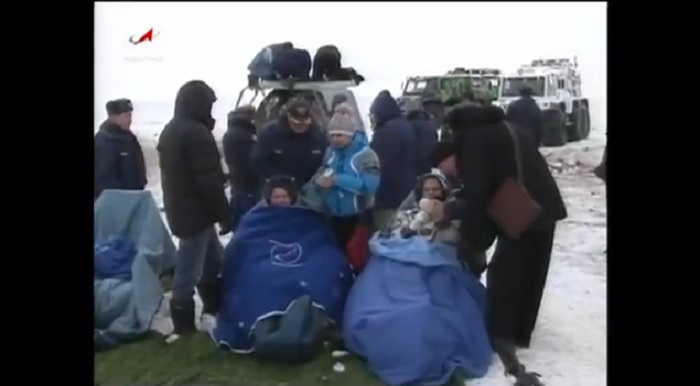
.
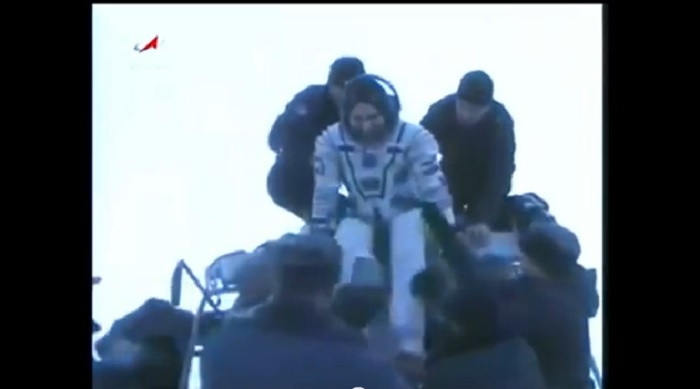
.
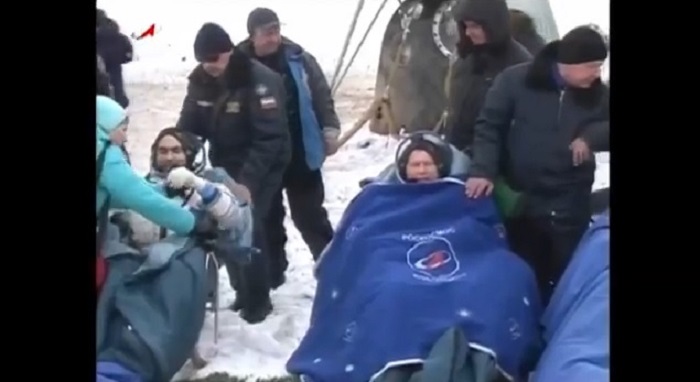
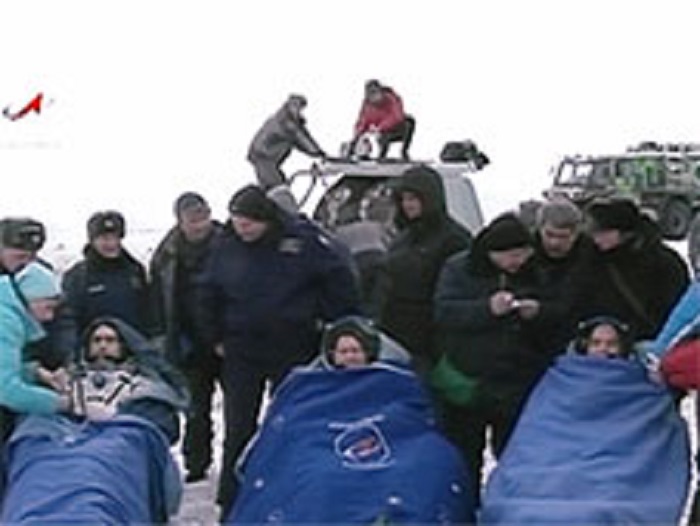
Quelle: NASA
5830 Views
